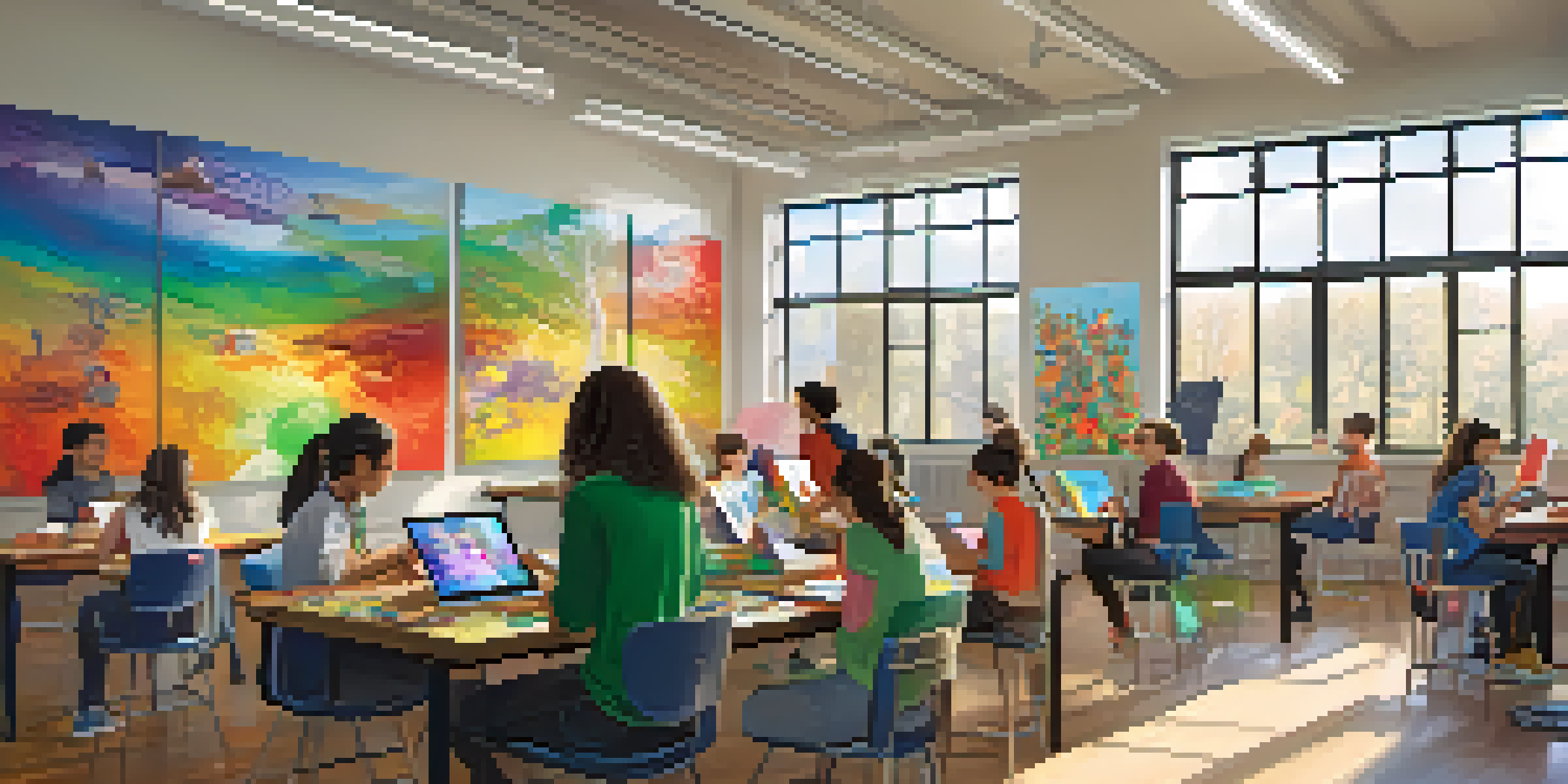Art Education: Innovative Approaches to Teaching Artistry

The Importance of Art Education in Today's World
Art education plays a crucial role in fostering creativity and critical thinking among students. In an age dominated by technology and rapid change, the ability to think outside the box is more important than ever. Engaging with the arts not only enhances individual expression but also cultivates a deeper understanding of cultural diversity.
Every artist was first an amateur.
Moreover, art education helps students develop essential skills such as problem-solving and collaboration. These are not just applicable in art; they translate into every aspect of their lives, including future careers. For example, a student who learns to brainstorm ideas for an art project is also honing the ability to innovate and work as part of a team.
Ultimately, the benefits of art education extend beyond the classroom. It prepares students for a world where creativity is a valuable asset, allowing them to navigate complex challenges with confidence and ingenuity.
Embracing Technology in Art Education
Incorporating technology into art education can open up a world of possibilities for students. Digital tools like graphic design software and online platforms allow for a new dimension of creativity. Instead of traditional brush and canvas, students can explore digital art forms, enhancing their skills and broadening their artistic horizons.

Furthermore, technology encourages collaboration among students, even if they are miles apart. Online art challenges and virtual exhibitions enable budding artists to share their work with a global audience, fostering a sense of community and inspiration. This instant feedback can be invaluable for growth and motivation.
Art Education Boosts Creativity
Engaging in art education fosters creativity and critical thinking, essential skills in today's rapidly changing world.
By integrating technology into the curriculum, educators can ignite students' enthusiasm for art and prepare them for a future where digital skills are paramount. It's about blending the traditional with the innovative to create a holistic learning environment.
Interdisciplinary Approaches to Art Education
Art education can greatly benefit from interdisciplinary approaches that connect various subjects. For instance, integrating science and art can lead to exciting projects, like creating sculptures inspired by biology. This not only deepens understanding but also shows students the interconnectedness of knowledge.
Art is not freedom from discipline, but disciplined freedom.
When students see how art ties into history, mathematics, or literature, they are more likely to appreciate its relevance. Projects that involve storytelling through art can motivate students to explore their creative side while enhancing their comprehension of narrative structures. It’s a win-win situation.
Such approaches also cater to different learning styles, ensuring that all students can find their niche. Whether they excel in visual learning or prefer hands-on experiences, a blended curriculum allows for greater engagement and retention of knowledge.
Hands-On Learning and Experiential Art Education
There's something special about getting hands-on with art projects. Experiential learning allows students to dive into the creative process, making it memorable and impactful. Whether it’s through pottery, painting, or mixed media, the tactile experience can inspire passion and experimentation.
Field trips to museums or artist studios can also enhance this hands-on approach. Students get to see art in action, experiencing the vibrant atmosphere of creativity firsthand. Such outings can spark new ideas and motivate students to explore different artistic techniques.
Technology Enhances Art Learning
Incorporating technology into art education opens new avenues for creativity and collaboration among students.
By encouraging exploration and experimentation, educators foster an environment where students feel free to express themselves. This approach cultivates confidence and a sense of ownership over their artistic journey.
Community Involvement in Art Education
Community involvement can greatly enrich art education, providing students with real-world connections. Collaborating with local artists or organizations can lead to workshops, exhibitions, and mentorship opportunities. These experiences can deepen students' appreciation for the arts and provide valuable networking opportunities.
When students engage with their community, they gain insights into various art forms and cultural expressions. This not only broadens their artistic perspective but also encourages them to think about how art can impact society. In turn, they may feel inspired to create works that reflect their community's values and stories.
Ultimately, community involvement fosters a sense of belonging and purpose among students. It reinforces the idea that art is a shared experience, one that can bring people together and spark meaningful conversations.
Fostering Emotional Intelligence Through Art
Art education can play a vital role in developing emotional intelligence in students. Engaging in creative activities allows them to explore feelings and express themselves in unique ways. This can be particularly beneficial for students who may struggle with traditional forms of communication.
Through art, students learn to identify and articulate their emotions, cultivating empathy and understanding for others. Group projects or discussions about artworks can encourage them to consider different perspectives, fostering compassion and social awareness.
Community Enriches Art Experiences
Community involvement in art education provides students with real-world connections, enhancing their appreciation for the arts.
By nurturing emotional intelligence, art education prepares students for interpersonal relationships and challenges they will face in life. It empowers them to navigate their feelings and connect with others on a deeper level.
The Future of Art Education: Trends and Innovations
As we look ahead, art education continues to evolve with new trends and innovations. One such trend is the growing emphasis on sustainability in art, encouraging students to use recycled materials and eco-friendly practices. This not only fosters creativity but also instills a sense of responsibility toward the environment.
Additionally, there's an increasing focus on mental health within art education. Programs that promote mindfulness through art can provide students with an outlet for stress relief and self-discovery. This holistic approach to education is becoming more recognized as essential for overall well-being.

The future of art education is bright, filled with possibilities that inspire the next generation of artists. By embracing these trends, educators can create engaging and meaningful experiences that resonate with students, preparing them for an ever-changing world.